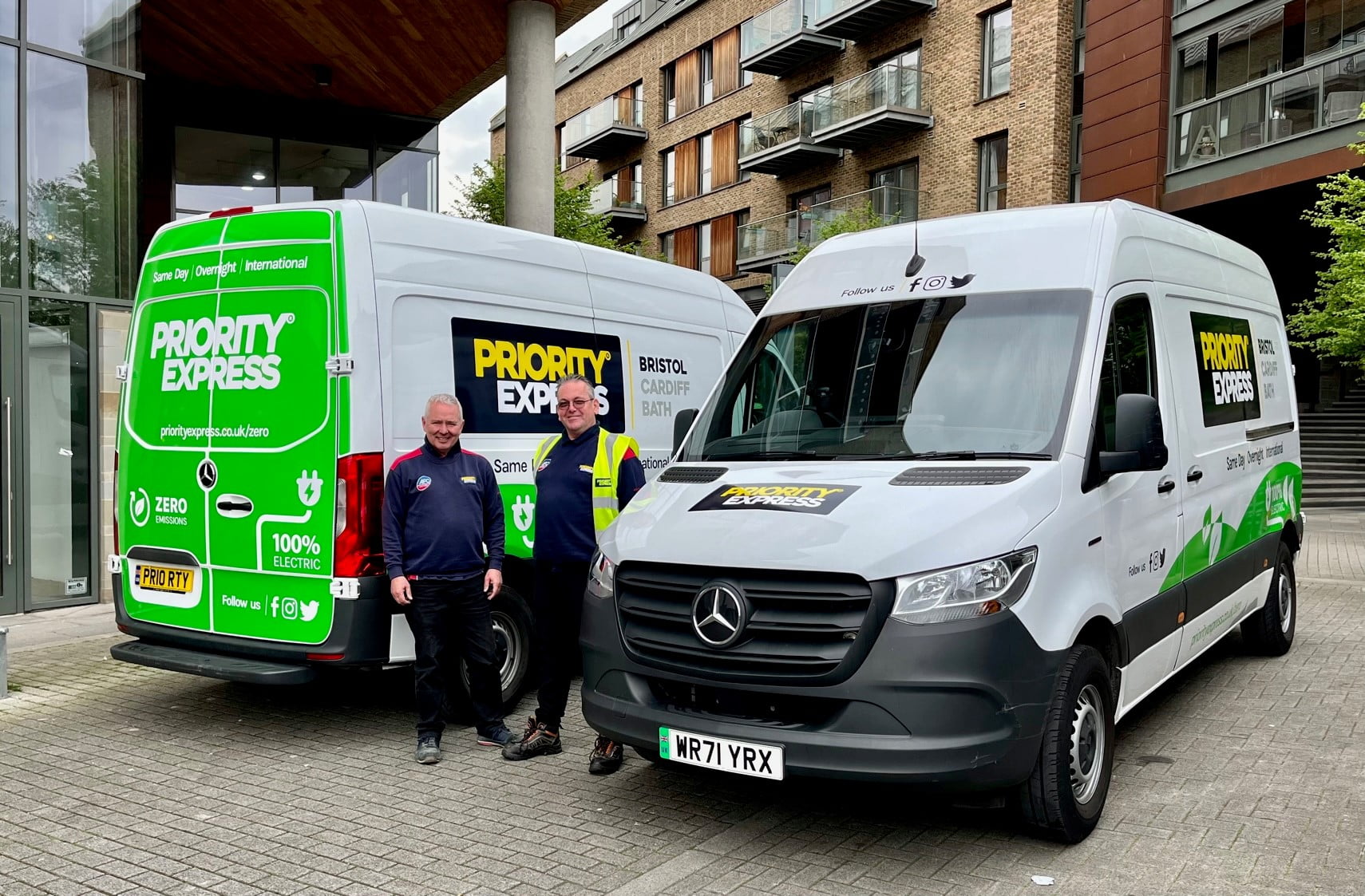The company operates 40 vehicles, including two Mercedes eSprinters, two Iceni ecargo trikes and four Bullitt Cargo bikes. The ecargo trikes are built locally in Westbury, Wiltshire.
Neil Havill, managing director, is really pleased with their ability to carry 200kg and 20 to 25 stops’ worth of parcels. He looked at others on the market and these stood out as rugged in comparison, with the additional benefit of supporting another local business.
The Mercedes eSprinters were initially suggested by the local Mercedes-Benz dealer and a local chargepoint company has been helpful too. The vans have a range of 90 miles, which is far enough for the local deliveries in Bristol and Cardiff, where they are based. To ensure that the vans can be charged quickly, the company has installed 40kW DC chargers with two cables. This allows one van to be charged at 40kW or two simultaneously at 20kW.
The eSprinters have been welcomed by the drivers who find them quiet to drive compared to a diesel, while the single speed transmission makes urban driving much easier. There are some concerns about driving range and the availability of public charging if needed, and the quiet driving experience means drivers must be aware of pedestrians who may not hear them approaching.
Neil had expected a little more payload than the 700kg on offer but is otherwise delighted with the vans. He anticipates that more than a third of the company’s deliveries will be zero emission in the next five years.
Some drivers take their vans home. This is a perk as it means they don’t need their own transport to get to work. However, this is a challenge for those driving electric vans as they require home chargepoints. To address this, Neil is considering providing chargepoints at some of the drivers’ homes and adding further charging points at the depots, so that the vans can be charged while they are loading at the start of a shift.
The ecargo riders are not only committed to making deliveries carbon-neutral but also keeping fit and often use the minimum level of electrical assistance (five levels available) or none at all to improve their workout!
Neil points out: “The ecargo bikes are quite large vehicles, so we have put in place a training programme for the riders, to ensure they are operated safely.”
The company promotes the electric van deliveries by offering their customers the option to select an electric van. The cost can be cheaper for customers and it means that their products will be seen as more sustainable.


